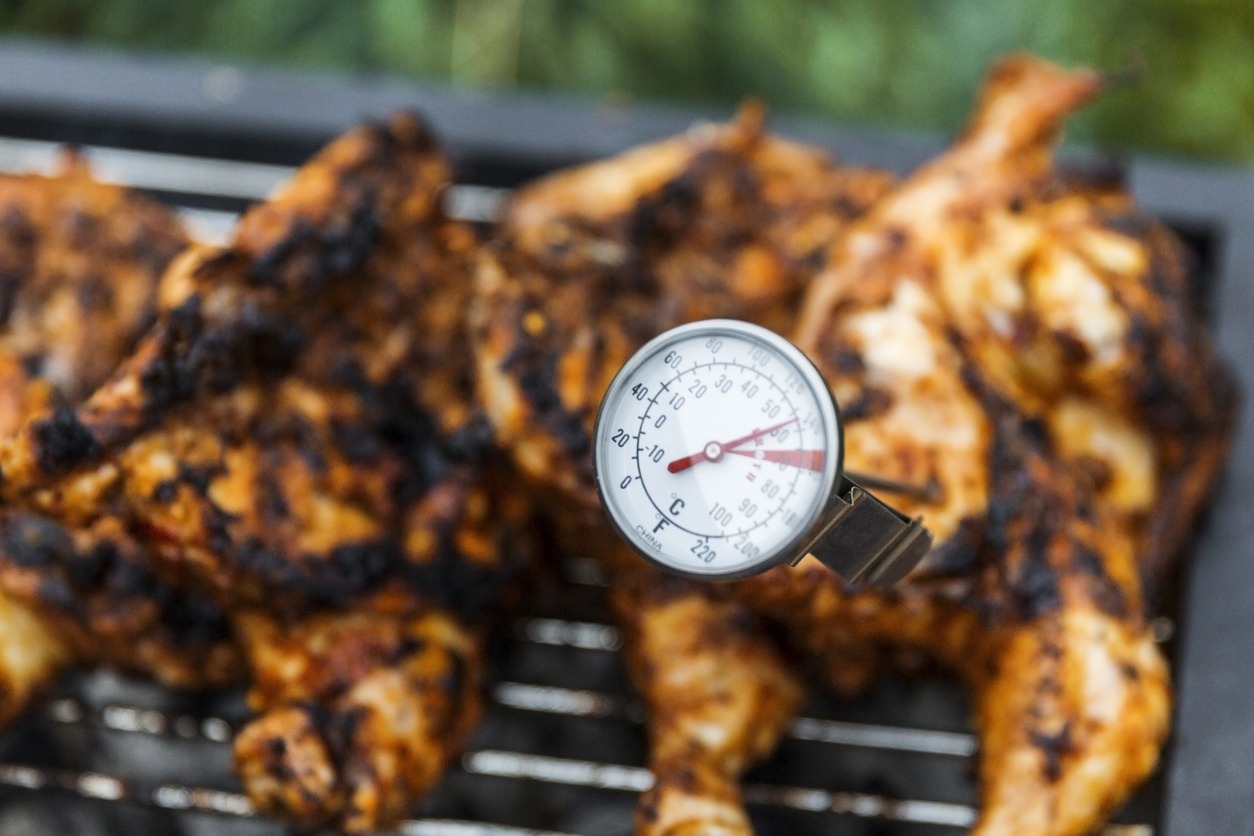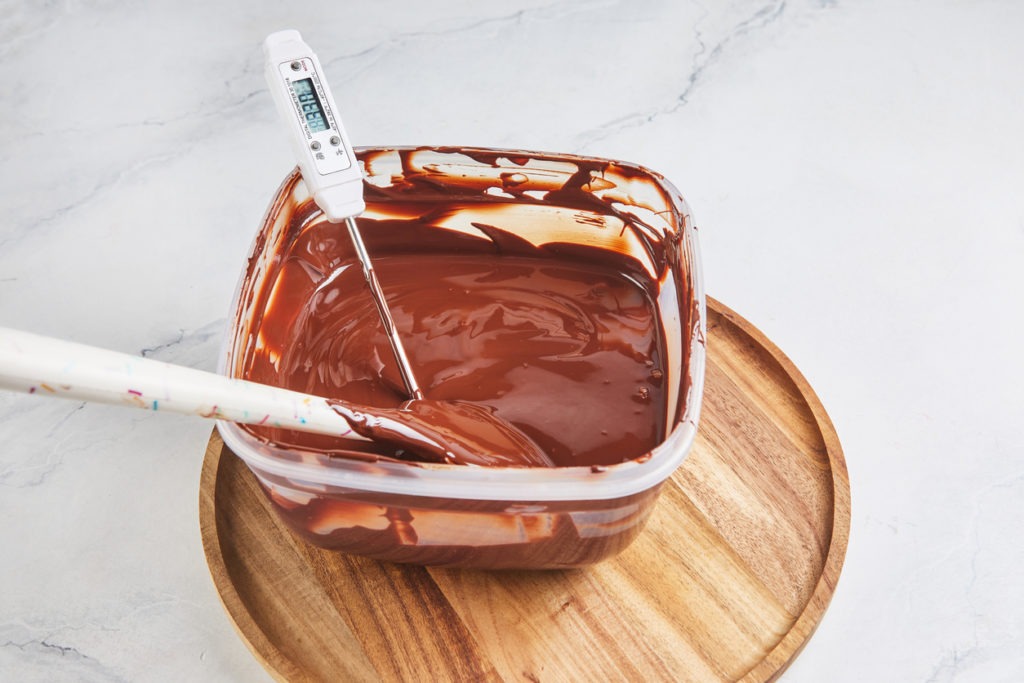Thermometers are useful for all types of meat and poultry, including hamburgers, chicken breasts, and pork chops, not just holiday roasts. Using a food thermometer when cooking meat, poultry, and even egg dishes is the only dependable way to ensure that you are creating a safe dinner. It also aids in taste retention and prevents meals from being overcooked.
Why you need a food thermometer?
Everyone is at risk for foodborne illness. The Centers for Disease Control and Prevention (CDC) estimate that over 48 million Americans fall unwell each year due to dangerous bacteria in food, and approximately 3,000 of them die. Some individuals may be at increased risk for foodborne illness. These include pregnant women and their unborn offspring, newborns, young children, older adults, individuals with compromised immune systems, and those with certain chronic diseases. These individuals should exercise particular caution when handling food securely.
A Guide to Using a Food Thermometer
- Check the interior temperature with an instant-read food thermometer at the end of the cooking period, but before the food is supposed to be done.
- The food thermometer should be positioned in the thickest portion of the dish, away from any bone, fat, or gristle.
- Insert the thermometer past the depression or “dimple” along the entire length of the sensing region.
- Insert an instant-read digital thermometer horizontally into thin hamburger patties.
- Egg dishes, meat casseroles, and irregularly shaped items such as roasts should be inspected in multiple locations.
- Before and after each use, wipe the stem of your food thermometer with hot soapy water. Avoid submerging the head in water.
- Follow the instructions for your food thermometer’s specific model. Use only thermometers that are safe for use in the oven when cooking. When using an instant-read thermometer, remove food from the oven.
Types of Kitchen Thermometers
1. Instant-Read Temperature Gauge
The instant-read thermometer is a probe thermometer, available in both analog and digital forms, that allows a cook to take instant readings of a food’s temperature. They are useful for determining the doneness of a piece of meat or poultry while cooking, but they are not intended to be left in. The probe is easily inserted into the food, the temperature measured, and then removed.
Instant-read thermometers can also be used to measure the temperature of hot food in a steam tray or chafing dish, as well as the temperature of cold food at a salad bar, as well as the rate at which a soup or sauce is cooling (to ensure that it does not spend excessive time in the temperature danger zone).
2. Thermometer for Meat
Meat thermometers are similar to instant-read thermometers, but the analog kinds include a larger dial to make them simpler to read. In contrast to an instant-read thermometer, a meat thermometer is put into a beef joint or a complete chicken (or turkey) and remains there during the roasting process. Checking the temperature is as simple as glancing at the dial.
The digital versions are more refined. They are programmable to produce a beep when the appropriate temperature is attained. In this instance, the probe is located at the end of a long, oven-safe wire that is attached to the unit, which is often magnetically affixed to the exterior of the oven.
You can even leave the probe in the meat after removing it from the oven in order to monitor its temperature during resting.
3. Sweets and Fry Thermometer
Glass candy and deep-frying thermometers are used to measure significantly higher temperatures.
While meat and poultry can be cooked between 130 and 175 degrees Fahrenheit, confectionery requires sugar to be cooked at temperatures as high as 300 degrees Fahrenheit, and deep-frying requires oil to reach at least 375 degrees Fahrenheit.
Individual candy thermometers and deep-frying thermometers are available, although typically they are combined and function adequately for home cooks. Typically, they include a clip for securing the thermometer to the rim of the pot, as well as a chart indicating the ideal temperature for each dish.
Why it matters: In confectionery, sugar must be heated to the ideal temperature, neither too cold nor too hot, in order to achieve the correct consistency for the type of candy being made. Similarly, depending on what you’re frying and the sort of oil you’re using, if it’s too cool, the food may become greasy, and if it’s too hot, the oil may begin to smoke and even catch fire.
4. Probe Cord Thermometers for Ovens
Oven probe cable thermometers are adaptable restaurant equipment that may be used to measure the temperature of the majority of items. They are created specifically for use within an oven or covered pot during cooking, but can also be used outside of the oven. The biggest problem with them is that they aren’t calibrated.
5. Bimetallic Dial Oven-Safe Thermometers
Bimetallic thermometers with a dial display temperatures in one to two minutes. This thermometer is substantially slower than the majority of others listed. However, unlike many of the items on this list, these restaurant supplies can be used in foods during cooking, however they must be placed at least 2 inches deep for precision. These restaurant supplies are ideal for preparing roasts, soups, and casseroles, but are not recommended for thin dishes. Due to the metallic composition of these thermometers, they transport heat readily and may not always offer reliable readings.
6. Combination of a Thermometer and Fork
A standard thermometer-fork combo provides temperature readings in two to ten seconds. These are adaptable restaurant supplies that can be incorporated into a variety of dishes. Due of their fork-like design, they are extremely useful for grilling. The use of thermometer-forks is prohibited until the food is nearly done cooking.
7. Thermocouple
By measuring temperature with voltage, thermocouple temperature readings are quick and accurate. Two thin wires of different metals are linked together inside a probe. Temperature results in a chemical interaction between the metal wires. A connection connects the probe to the digital display casing, which displays the reading.
Due to the small probe, thermocouple thermometers are ideal for measuring the temperature of meals of any consistency. They can measure extremely high temperatures, but they are not designed to remain in food during cooking.
The temperature range of a precise K-type thermocouple is between -328°F and 932°F.
8. Disposable Temperature Indicator
Utilizing a pre-set sensor to measure temperature, single-use thermometers are designed for usage with specific meals. It is possible to overcook or undercook meals if you use the incorrect sort of disposable thermometer. For example, poultry should be cooked to 165 degrees Fahrenheit, whereas a steak can be made medium-rare at 145 degrees Fahrenheit.
Insert the end of the sensor into food. If the desired temperature is reached, the sensor’s color will change to indicate this. After measuring the temperature, throw away disposable thermometers. Using disposable thermometers prevents food cross-contamination. They are not intended to be used during cooking.
9. Pop-Up
Pop-up thermometers are intended for single-use and are most frequently used with poultry. During cooking, pop-up thermometers can be inserted. The basic device is built from nylon that is safe for consumption and has an internal stainless steel spring. Inside, an organic firing substance around the spring is heated until it has entirely dissolved, enabling the top to pop up.
It is essential to correctly position the pop-up thermometer so that it can respond to an internal temperature. Otherwise, the thermometer may register a high external temperature while the interior remains raw.
10. Liquid-Filled Temperature Gauge
This is the oldest available kitchen thermometer. As their name implies, they consist of a calibrated glass tube containing a colored liquid. This thermometer must be inserted in the food prior to cooking for it to function properly. You can check the temperature of the food via the glass as it cooks.
In conclusion
A thermometer is an essential piece of equipment missing from every kitchen. When preparing sweets, baking bread, grilling meat, or even just storing food in the refrigerator, you need several types of culinary thermometers to measure the temperatures.



